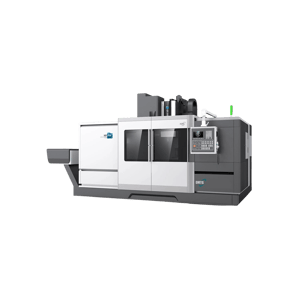CNC machines come in a variety of forms. The vertical machining center is one of the most widely used but how much do you know about it? Let’s take a dive into them and see what they are and how they work. But first, some classification.
Types of CNC Machines
There are a number of ways to classify CNC machines, but for our purposes, we’ll break them down into:
- Milling machines: removes material with a rotating spindle while the workpiece is typically fastened down. They come in horizontal and vertical formats, the latter we’ll talk about here.
- Lathes: cuts material by spinning it for cylindrical or conical designs
- Electrical discharge machines: uses electricity that produces high temperatures for manipulating materials into desired shapes.
- Plasma cutting machines: cuts metal with a plasma torch. Good for coarse work and requires materials that can conduct electricity.
- Laser cutters: as the name says, this cuts using a laser, resulting in a more accurate cut than the plasma cutter
- Waterjet cutters: use a high-pressure stream of water to cut. Good for temperature-sensitive material that could melt at high temperatures (such as some plastics)
- Routers: similar to vertical machining centers but generally not as accurate. Good for cutting complex shapes in softer materials.
- Grinders: for smoothing and finishing high-precision parts
So What is a CNC Vertical Milling Machine?
A vertical milling machine is a type of CNC machine tool that has a vertically-oriented spindle to machine parts typically fixed to a horizontal table.
VMCs are equipped with cutting tools such as milling cutters, drilling tools, and boring tools that perform cutting operations on the workpiece.
Machining centers vary according to their function, number of axes, the dimension of the working area, spindle position, and the options available.
VMCs are commonly used for high-precision and complex machining operations in industries such as aerospace, automotive, and medical device manufacturing.
Horizontal vs Vertical
Both horizontal and vertical machining centers have their place in modern manufacturing. However, there are a number of factors that must be considered when choosing which format is best for your application.
Horizontal milling machines are primarily used for larger materials and workpieces. They are typically provided with integrated pallets with a vertical fixture (often referred to as a tombstone) that allows access to multiple sides of the workpiece. This reduces the number of times the operator must set up the part, reducing the risk of error and increasing productivity.
Vertical milling machines have several advantages, especially for small and mid-size shops. They are generally much less expensive than horizontal machines and easier to set up and program. The machines tend to be smaller and much more versatile. They are ideal for low-volume, high-mix production requiring frequent part types and programming changes.
What Can You Make With a Vertical Milling Machine?
Quite a bit. Just a few examples are:
- Box-type parts for automotive work, such as engine blocks, gearboxes and pump housings
- Complex curved shaped parts.
- Irregular-shaped parts, including molds and dies
What to do When Things Go Wrong
No machine is perfect. Here are some things to watch out for when using a vertical milling machine on your project.
- Vibration: this can be caused by a weak fixture or bad stability of the workpiece. Always make sure your workpiece is properly secured
- Chip accumulation: as you cut through a piece, chips from the material can accumulate in the cutting area. Safely cleaning these out helps, but so does planning your cuts to minimize debris falling into the cutting path
Of course, the first course of action is to make sure that the vertical milling machine is the right one for the job at hand. And that you’re working with the right machine supplier. You want someone with the experience and training to program it properly and use it safely. Talk to us and see what one can do for you.


